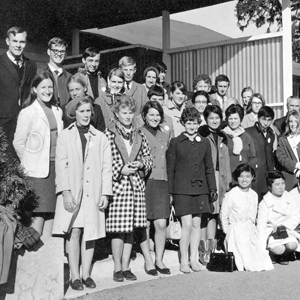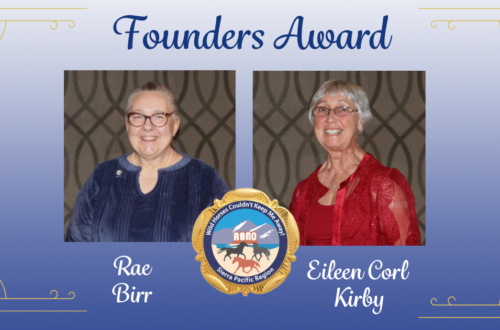
The Expanding Sixties for the United States Pony Clubs
Adapted from “A Story to Tell, The United States Pony Clubs, Inc. 1954–2004”
Growing pains accompanied the United States Pony Clubs’ success story during the turbulent 1960s. The leadership found it very challenging to train expert dedicated volunteers and prevent burnout as they served the growing membership, which were fueled by the sheer numbers coming out of the “Baby Boom” generation.
“Coordination of Pony Club activities on such a scale has place a considerable strain on the volunteer national headquarters organization,” wrote USPC’s third president, Sherman P. Haight, Jr., in his foreword to the 1962 Annual “A need for decentralization of authority and improvement of communications is evident, otherwise adequate support of the individual clubs is no longer possible.”
Expanding Pony Club Programs

By 1962, USPC served more than five thousand members in 110 clubs throughout 15 national regions. That year, the USPC Annual Meeting was expanded to two days, and the board began regular quarterly meetings with committees formed to assist in the many demands and requirements of developing, implementing, and expanding Pony Club programs.
Pony Club leaders warned against overemphasizing competition and specialization. USPC was not a junior equestrian team, and the very close relationship with Foxhunting had begun to loosen. USPC had established itself in its own right with its own unique qualities. Although valuing the riding traditions of Foxhunting, USPC leadership did not want to foster a sense of “gentrification” of the clubs’ activities. “Our function is, and must remain, to provide a broad base for all children, not just a chosen few with expensive show or three-day horses,” said Howard Fair, one of the founding members of USPC.
Nonetheless, during those busy years, the volunteer leadership found the time and resources to host international exchanges, notably with Canada, England, Australia, and New Zealand Pony Clubs.
Setting the Standards

A strong and concerted effort by USPC leadership to formalize and emphasize instructor training took hold in the 1960s. A dedicated volunteer and leadership team member of the USPC from the earliest days, Captain John H. “Jack” Fritz, was instrumental in forming instruction committees and guiding the formalization of instruction for volunteer teachers, as well as the testing program for members.
By mid-decade, USPC had formalized and issued revised rules for rallies, new A-B-C-D standards, a new handbook, quarterly newsletters, a network of national examiners, and standardized testings for the various levels.
Club volunteers emphasized stable management skills as the children took over an increasing role in maintaining the horses and their accommodations. Trophies for stable management were awarded at annual national rallies. Other events in local clubs included tack-cleaning competitions, veterinarian visits for equine checkups, and lectures on health care and diseases of horses.
While hard-working adult volunteers continued to cope with structural issues of this burgeoning organization, some of the local club parents began turning over the reins of organization to their older children. Difficulties due to these growing pains often colored the activities on the local level.
By the end of the 1960s, USPC had come a long way in membership, culture, and prominence. Four people who had expressed concern about the future of horse sports in early 1953 had launched a truly nationwide organization that was serving more than 7,000 Pony Club members.
USPC President Harry I Nicholas, Jr., wrote a glowing evaluation of the organization in his 1969 President’s Report: “It is the invisible influence of the Pony Club which has asserted itself on our horse world which is of such importance, and, as far as one can see, is likely to provide the very lifeblood of horsemanship and horsemastership for just as long as horses are to be found amongst us … There is no telling where this great movement will lead or to what dimensions it will grow. In the years of its existence, the impressive number of clubs and memberships have spread and multiplied all over the world. It is for this reason that the Pony Club stands high among the great changes in the affairs of our modern horse world.”
As the USPC leadership, member clubs, parents, and members looked to the 1970s, they could not begin to imagine the changes about to take place for them and their organization.
USPC Presidents during the 1960s:
- Sherman P. Haight, Jr. MFH
- Howard Morris, Jr.
- Harry I Nicholas, Jr. MFH
History adapted from A Story to Tell, by Robert R. Morris (The Donning Company Publishers, 2004).
Support the Future of The United States Pony Clubs
In honor of USPC’s history, consider showing your support with a gift to the Annual Fund. A gift of any amount helps ensure the future of Pony Club’s mission for generations to come.
In addition, help us fundraise by starting a Facebook Fundraiser.
To order the limited-edition USPC 70th Anniversary commemorative pin, visit https://shopponyclub.org/products/pin-70th-anniversary





